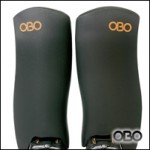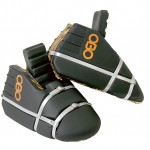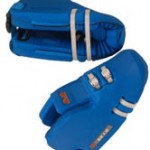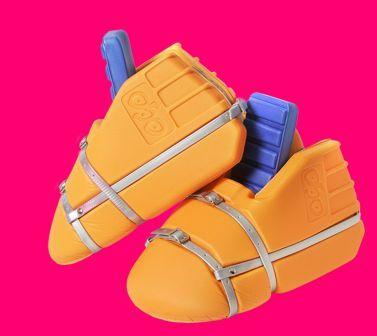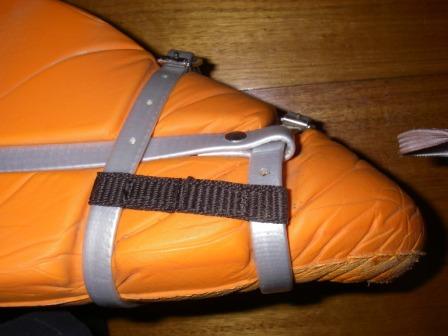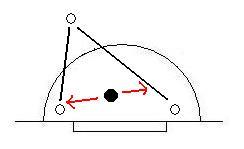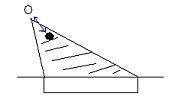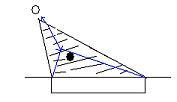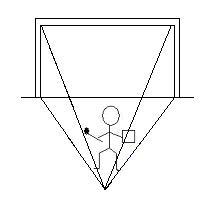Hey Everybody,
When I read through the other reviews for the kit competition, which were all very good, I noticed that nobody had really been that creative and that I might be able to fill this gap. Either way, I hope you enjoy:
I waited anxiously on Monday morning, staring out the window till about 2 o’clock, when, suddenly, I saw a flash of light come down the road. As it came nearer and nearer, I got more and more excited, wondering what was going to happen and whether my life would change after this momentous event. Then the man walked towards me, dressed completely in red, and said “Please sign”. I could barely write as my hand was shaking so much due to the exhilaration. I managed to do so after 5 minutes, giving the red man his lovely pen back, soaking in sweat. He passed the package over to me and walked off. I did not know what to do; I was just so thrilled that it was finally here. I stayed, standing, at the front door for another 5 minutes, motionless, not knowing what to do. I then decided to rush into my bedroom alone to open the package. When I arrived in my room, I threw down the package, searching for a pair of scissors of anything sharp. There was nothing anywhere. I ended having to use my bare hands and teeth to get in. But it was worth it. When I opened the package, a huge light stared at me, almost blinding me. What was it? It was my new set of obo cloud leg-guards.
As soon as I saw them, I was in love. I knew these were my dream leg-guards. The colours, weight, durability, protection and rebound were everything I wanted. It was the most amazing thing I had ever seen in my life. I felt like going round my street and kissing anyone I saw, I was that happy. What was there not to like? Nothing. In my eyes, nothing could beat these. The yellow made me look like a bird…
I had my GCSE English Oral in 2 hours, which I had to attend. But I could not leave them. How could I bring them with me when I was going to talk about how John Steinbeck creates a feeling of sympathy for Lennie in “Of Mice and Men”? I just could not put them through it; I didn’t want to see them in pain. So, I took a bold move for the sake of my precious jewels, and chose to do my English Oral on the OBO Cloud Leg-guards. My teacher was amazed, saying she had never seen anybody so enthusiastic about a subject before. I got an A*, for which I took my leg-guards out to the local public house to celebrate.
The next day, I had my first match with them. I was in heaven. This was my paradise, forget about rehab, treat ecstasy addiction with obo leg-guards. They were so light, weighing nothing like any other pads I had ever worn. When I put them on for the first time, I was amazed by the comfort. I did not expect it from such a hard outer foam. Fortunately, OBO put a different inner foam in, and this made them unbelievably comfortable. I loved the way they hugged my legs, as if they were actually moulded on my legs. When taking shots to them, I felt no pain, even when playing against the ex-international, who had injured his goalie before the game. This was amazing, I was playing the game of my life, I was on cloud nine. When I had a one-on-one just before half time, I slid out, and my leg-guards did not twist slightly. This was due to the right leg-guard being slightly narrower than the left and also the wing hinging system, obo have in place on all leg-guards. Then after the break, I went down to log at a short corner, which the top of my left leg-guard saved, showing how useful the extra width on the left leg-guard is.
After the match, I noticed how for the first time in ages, none of my straps had come undone, unlike the opposing keeper, who was not wearing OBO, who had managed to become undone 5 times and lose one of his straps. I also realised that I had had no fear during the game of getting hit on the ankle or the knee, due to the design of these leg-guards.
A month later, it was time to wash my darlings. I made sure the water was warm for them, the way they like it, before adding a cup of borax. I then decided to do the same with fabric freshener, just to make sure that their skin was not irritated. It also made them smell great, ready to play their part in the club day the next day. Everybody commented on how good they looked, and although they did not say so, they were really chuffed.
A few years later, it was our anniversary and I was offered robo hi-control leg-guard’s. I said “Pah! No, how dare you even insinuate that! I will never leave them”. My pads had held up well over the years and there was no way I was leaving them now. Even though the inners had started to split and the outers and inners had started to come apart, these could easily be fixed with glue. And, either way, I had become attached to them, we had gone through a lot together, and I would only let them go when the time was right.
In the future, I would buy these again, and would be perfectly happy to play senior international matches with them in the future. Everything is great about them, I cannot fault anything. They are even easy to repair, even though they are very durable. I would recommend these to anyone, who wants a good set of leg-guards at a reasonable price. Although they may be more expensive than some other brands, in the end they last longer and are better.
Having told you this story, I would like to say that I would expect this from OBO, after all, “Goalkeepers are Amazing People”. You said be creative, I was creative. I hope that this included everything that is supposed to be in a review. Any questions, please ask? If I could put pictures in, I would, although maybe I should not, after all, the point of stories is to enlighten your imagination…
